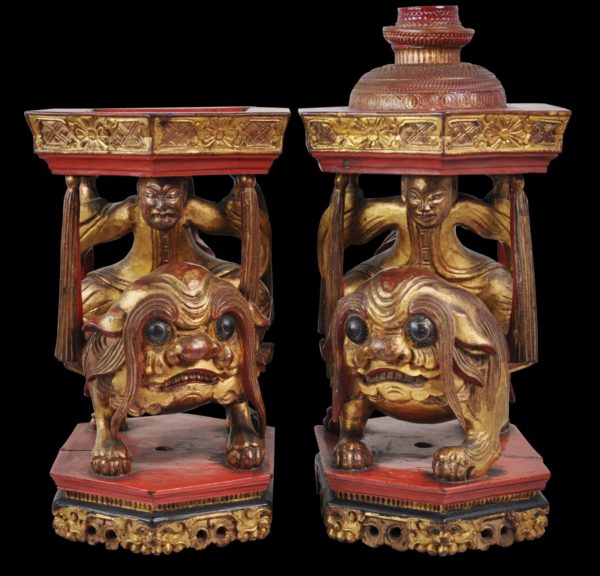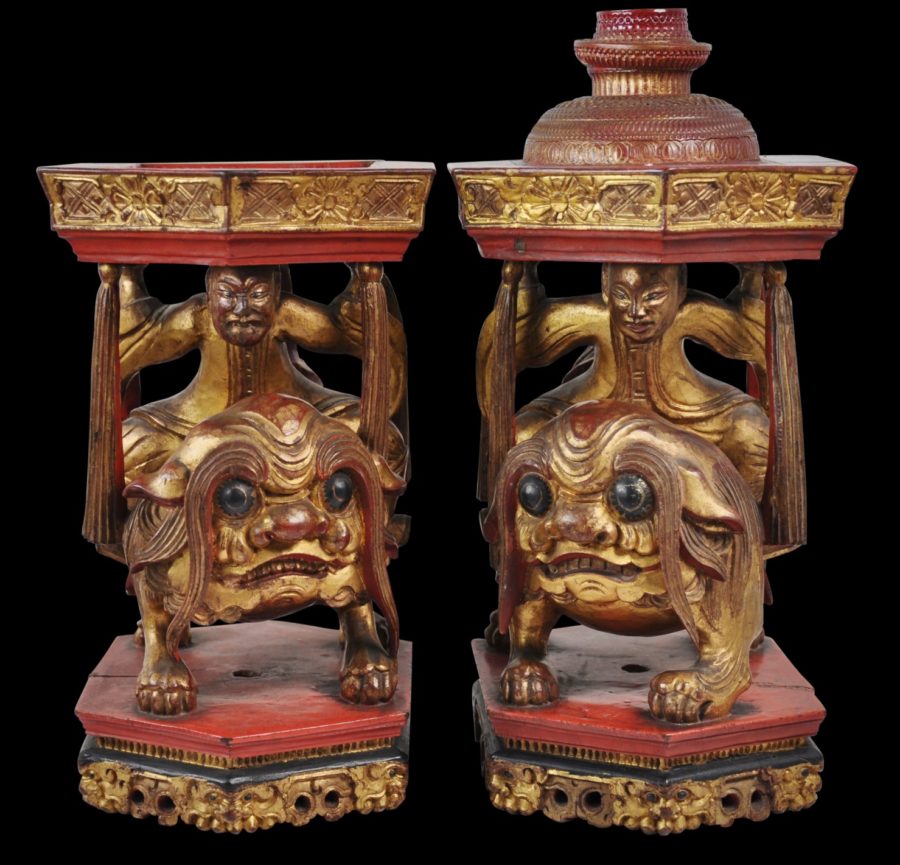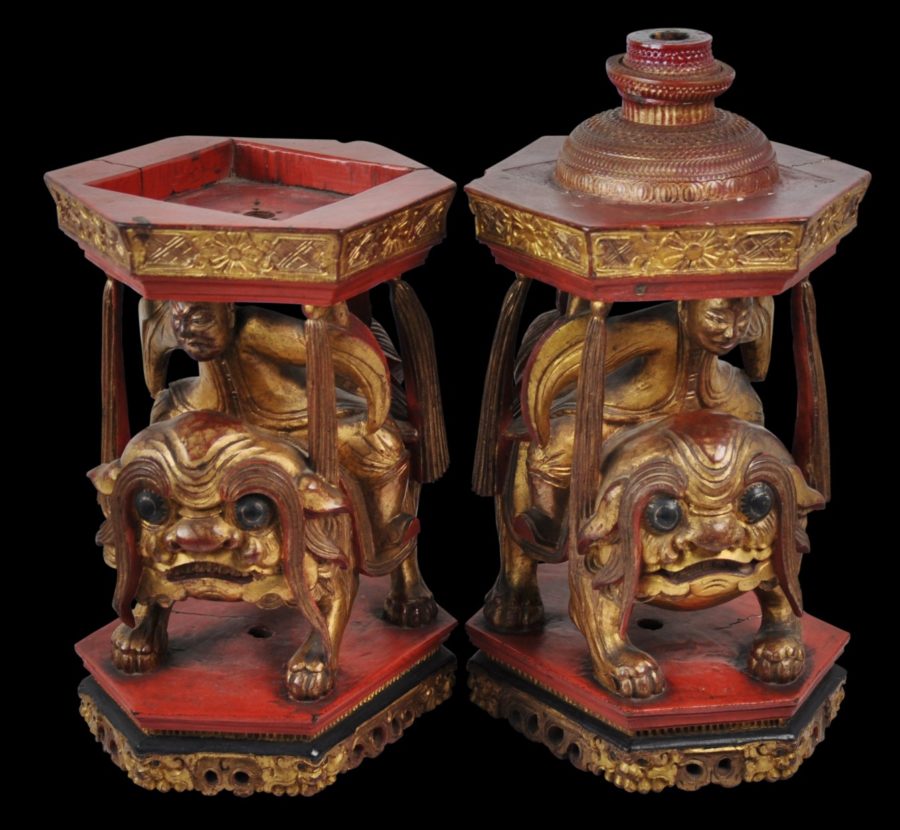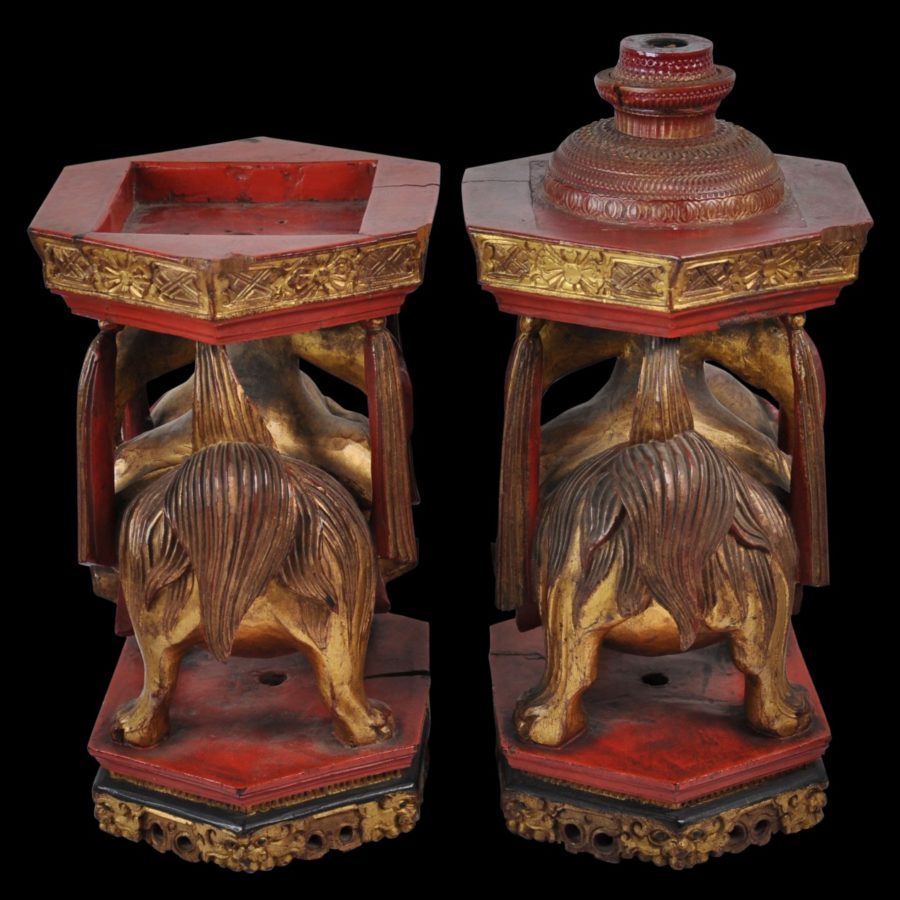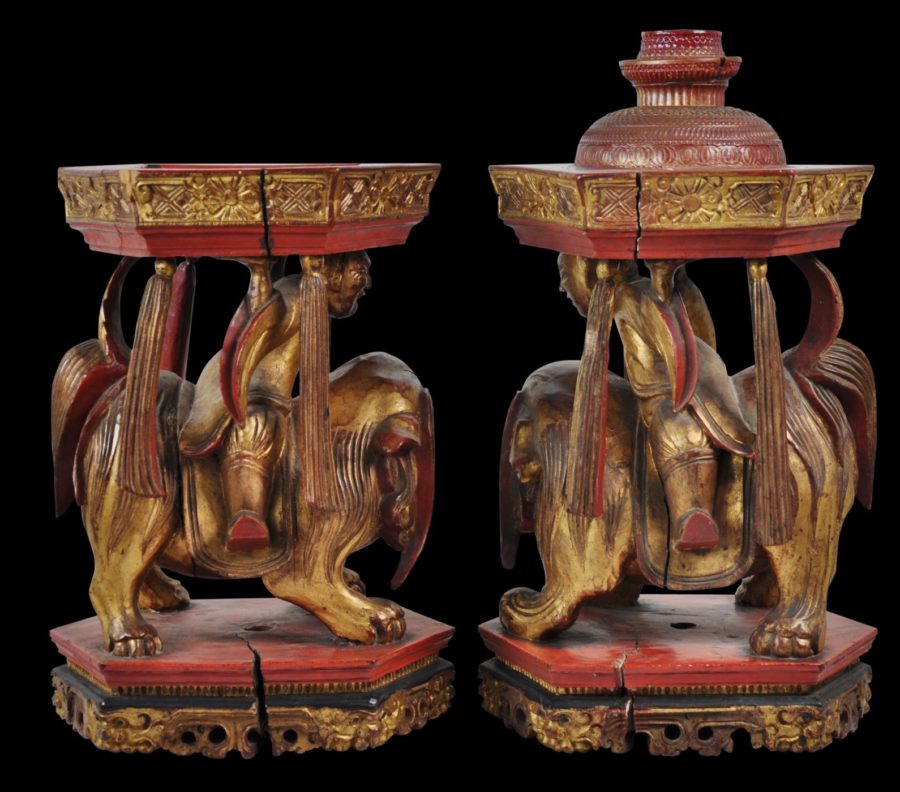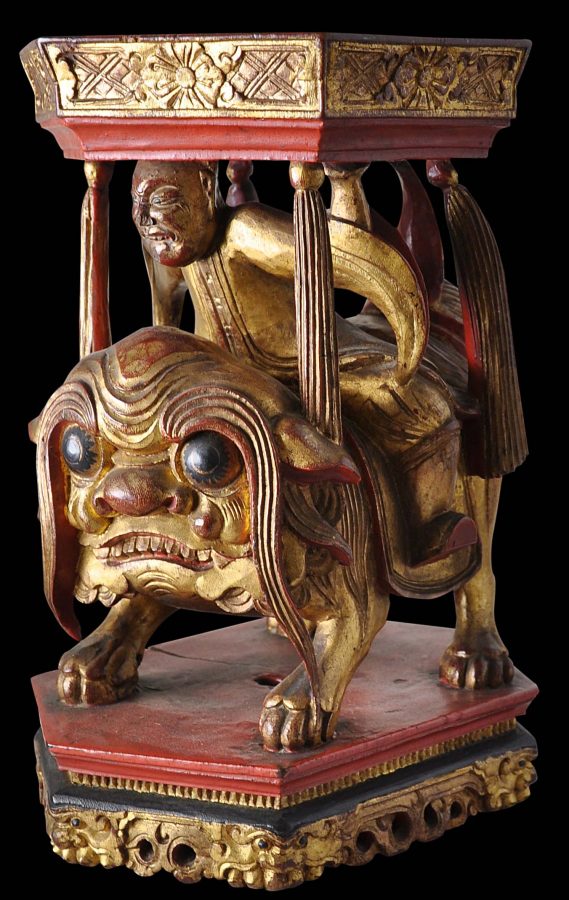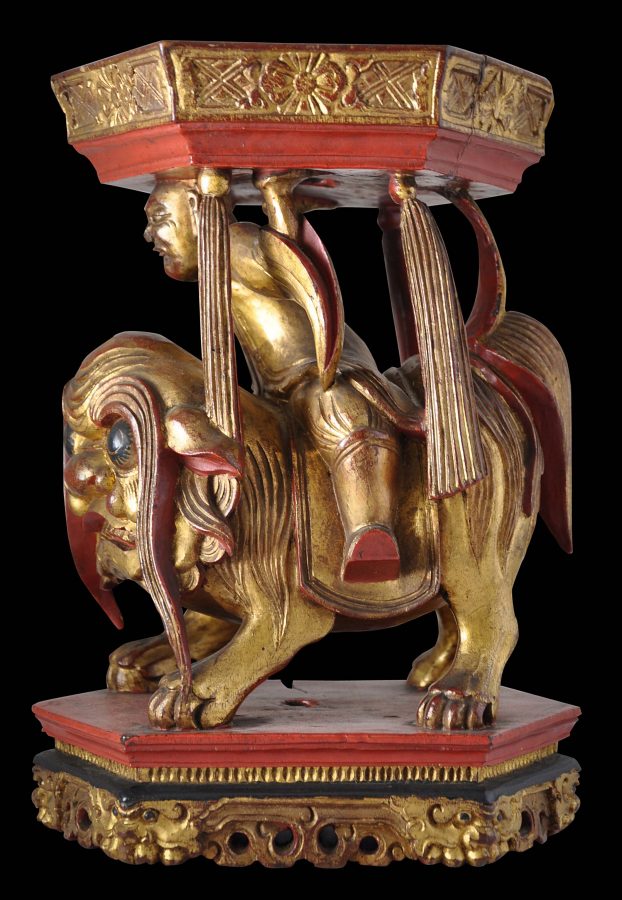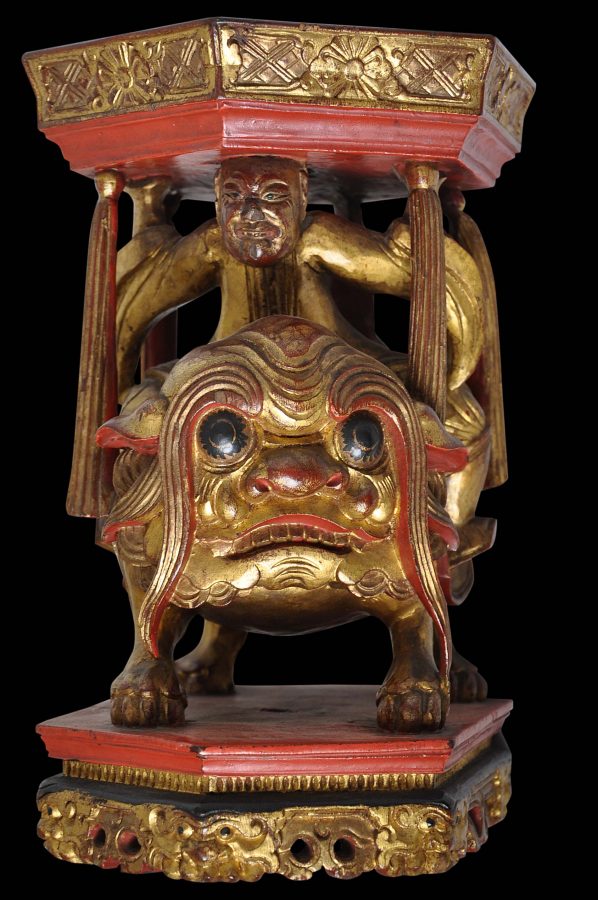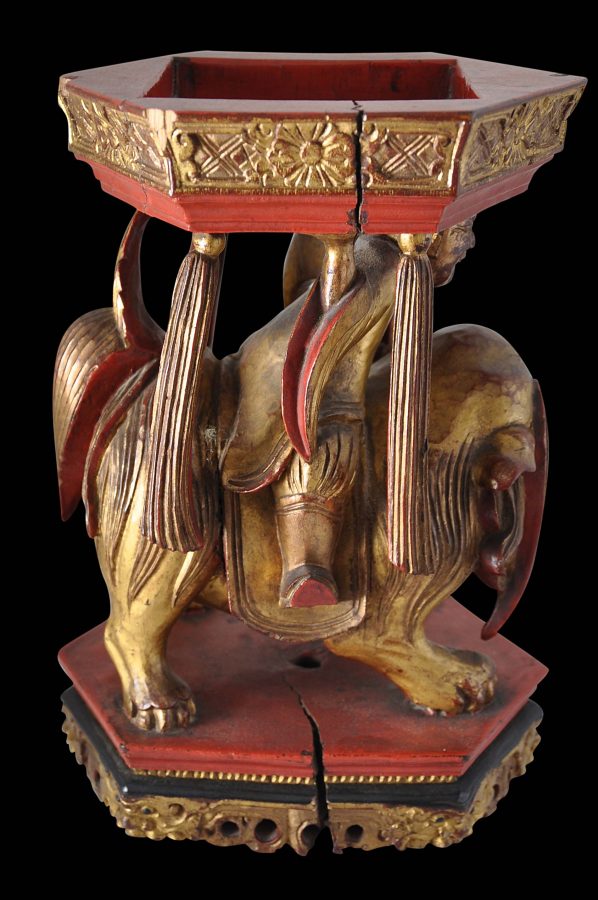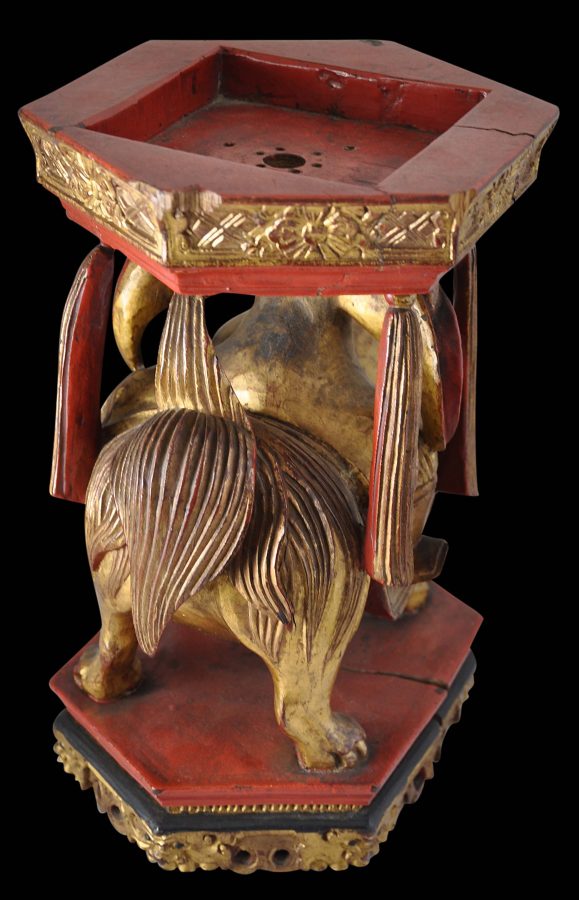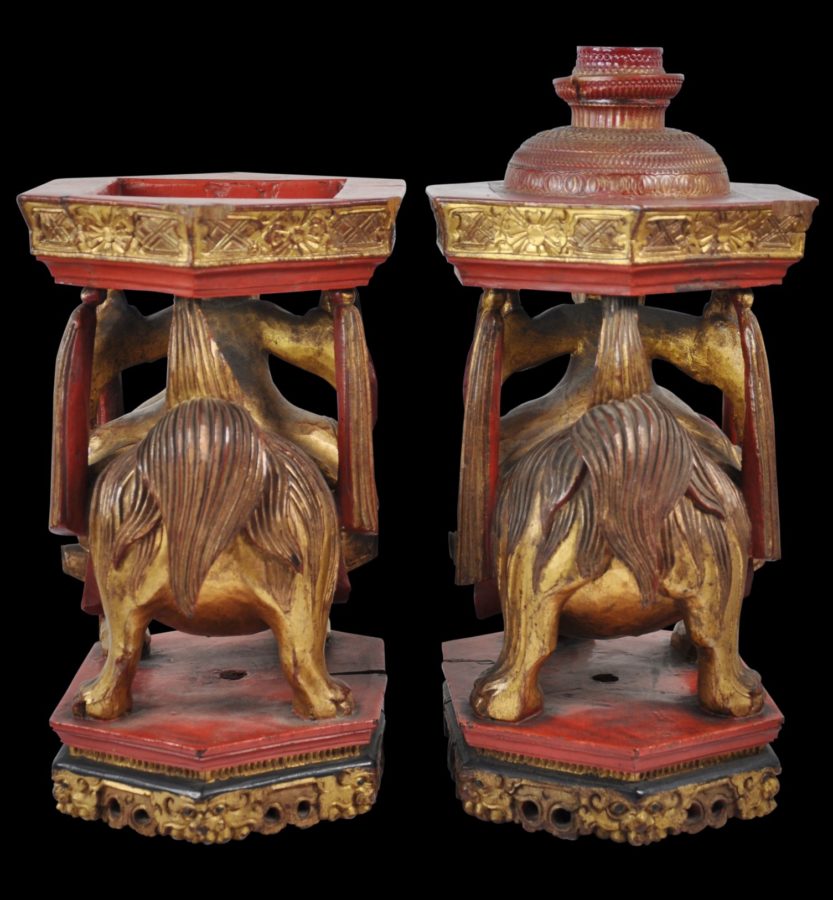This pair of whimsically and well-carved stands were designed to hold glass oil lamps used to illuminate a Straits Chinese family’s sam kai altar in the home. (The Straits Chinese or babas and nonyas are the localised Chinese of Malaysia and Singapore whose hybrid culture is a mixture of Malay and Chinese elements.)
Such stands and lamps were known either as a lampu minyak (which is simply ‘oil lamp’ in Malay), or a pelita sam kai (or ‘sam kai torch’, in Malay/Hokkien). The glass lamp used would have held a heavy, moulded glass goblet-shaped lamp, possibly imported from Europe.
Each base here is of carved namwood, most probably made in Singapore or one of the other Straits Settlements. Each has been decorated in red and has been gilded, hence this type of work is known as ‘red & gold’.
Each is carved, probably, from a single piece of wood, with a grimacing boy or man atop a qilin-type creature. In Chinese mythology, boy babies were brought to parents atop a qilin. Often such lamps were lit as part of a Straits Chinese wedding ritual, so lighting such a lamp was hopefully prophetic of the arrival of male children.
Two related lamp bases were offered by Christie’s Singapore in their Straits Chinese Ceramics and Works of Art auctions of 30 September 1995, and 31 March 1996, lots 362 and 931 respectively.
The lamp bases here have no obvious losses to the carving. Both have shrinkage-related cracks to one side. (It is possible that if the bases were to return to Singapore or Malaysia with their greater humidity, that the crack will close-up over time as the wood expands again.) The top of one has a cavity in which a glass lamp would have stood. The top of the other has a wooden support for perhaps another type of lamp fitted. Possibly, this could be removed.
References
Ee, R., et al, Peranakan Museum A-Z Guide, Asian Civilisations Museum, 2008.


